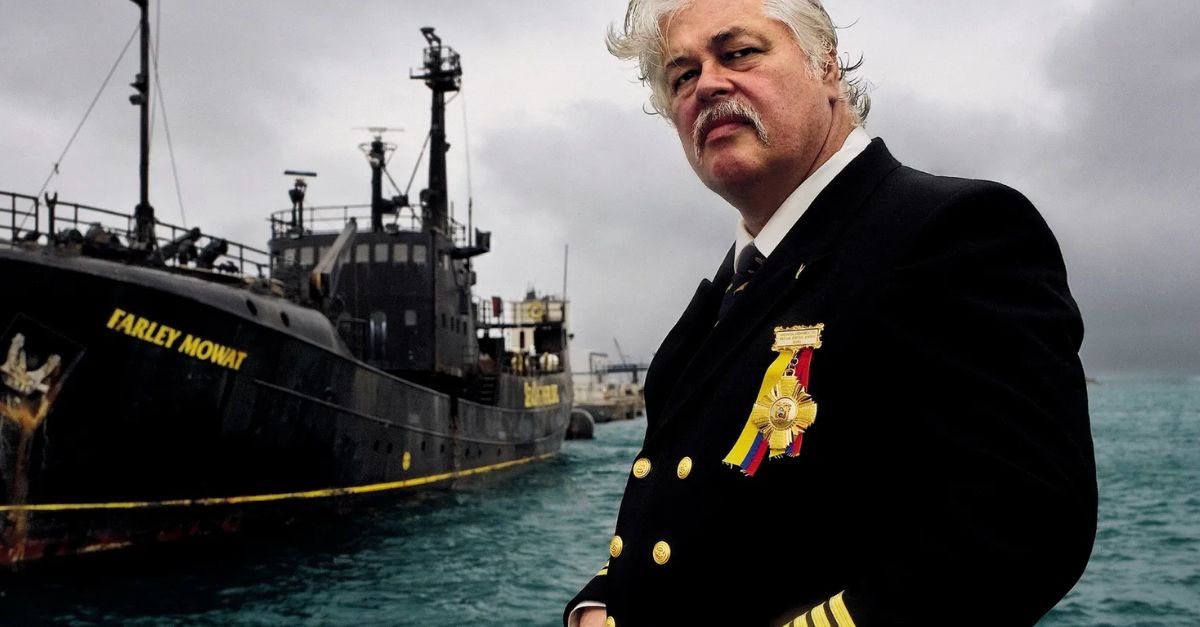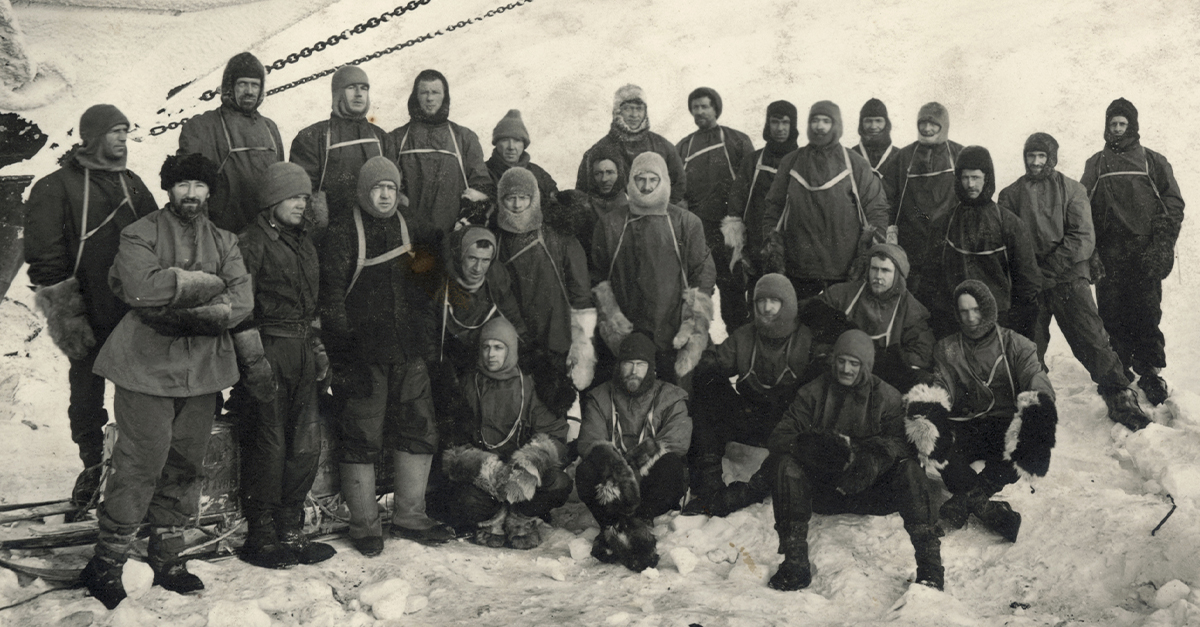Underwater Time Capsule
You don’t expect centuries-old secrets to surface during a routine day. One particular mission in French waters turned out to be anything but that. Beneath layers of saltwater and time in France, a ship long forgotten revealed itself.

Accidental Discovery
French Navy operators conducting routine underwater surveillance made an extraordinary discovery when their submersible drone detected an anomalous object on the Mediterranean seafloor. The March 2025 detection occurred during standard seabed monitoring operations near Saint-Tropez, turning what began as routine military reconnaissance into an archaeological breakthrough.
 Petty Officer 1st Class Peter Lewis, Wikimedia Commons
Petty Officer 1st Class Peter Lewis, Wikimedia Commons
Naval Survey Mission
France's comprehensive deep-sea exploration program was executed by the specialized underwater operations team CEPHISMER. This government initiative systematically monitors the vast underwater territories for geological resources, cultural heritage, and critical infrastructure, including deep-sea internet cables. The mission represented the country’s commitment to protecting its maritime domain.
 USEPA Environmental-Protection-Agency, Wikimedia Commons
USEPA Environmental-Protection-Agency, Wikimedia Commons
Sonar Detection
Advanced sonar equipment identified an artificial structure, approximately 30 meters in length, against the otherwise uniform seafloor. Deputy maritime prefect Thierry de la Burgade confirmed the sonar detected "something quite big," prompting immediate follow-up investigations. The acoustic signature distinguished the object from natural geological formations.
 Jean-Michel Roche, Wikimedia Commons
Jean-Michel Roche, Wikimedia Commons
Record-Breaking Depth
The wreck's location at 2,567 meters below sea level established it as the deepest shipwreck ever found in French territorial waters. Apparently, such magnificent depth exceeds the height of seven Eiffel Towers stacked vertically, placing the vessel in the Mediterranean's deep abyssal zone.
 National Oceanic and Atmospheric Administration, Wikimedia Commons
National Oceanic and Atmospheric Administration, Wikimedia Commons
Previous Depth Record
La Minerve, a French submarine that sank in 1968 off Toulon, previously held France's deepest wreckage record at a depth of 2,300 meters. The military vessel plunged to its demise with 52 navy crew members aboard, occurring a few minutes after beginning a routine assignment.
Strategic Location
The collapse of the 16th-century merchant boat lies off Ramatuelle’s coast, near the resort town of Saint-Tropez, a region historically important for Mediterranean maritime trade. This coastal area served as a vital waypoint along ancient trading routes that connected northern Italy with French ports.
Strategic Location (Cont.)
It facilitated the movement of goods and cultural exchange. The site’s designation as "Camarat 4" follows systematic naming conventions for underwater heritage areas. The name reflects both the geographical context and the archaeological practice of naming newly found destructions after prominent local landmarks.
 W.Strickling, Wikimedia Commons
W.Strickling, Wikimedia Commons
Ship Identification
The analysis revealed a large merchant ship around 30 meters in length and 7 meters in breadth. Its construction methods and cargo distribution patterns indicate it operated as a commercial transport. However, initial assessments suggest the ship represents typical Renaissance-era architecture.
 Militärhistorikern, Wikimedia Commons
Militärhistorikern, Wikimedia Commons
Mediterranean Trade Routes
As we know, during the 16th century, this Mediterranean corridor formed a vital commercial artery. It additionally assisted the exchange of ceramics, metals, and luxury goods. Venetian and Genoese merchants dominated these routes, transporting spices from Eastern markets and manufactured goods between European ports.
 Charles Henry Seaforth, Wikimedia Commons
Charles Henry Seaforth, Wikimedia Commons
Venetian And Genoese Dominance
The dominance of these two city-states led to frequent rivalry, including a series of Venetian–Genoese Wars between the 13th and 15th centuries, mostly fought over control of lucrative trade routes and strategic ports. Despite these conflicts, both republics maintained their influence well into the 1500s.
 Quinto Cenni, Wikimedia Commons
Quinto Cenni, Wikimedia Commons
Italian Ceramic Origins
The ship's cargo originated from Liguria, a coastal region in northwestern Italy, near the French border, and is recognized for its distinctive ceramic production during the Renaissance. Ligurian artisans created the vessel's 200 ceramic jugs using traditional techniques, incorporating religious symbolism and decorative motifs.
 Ethan Doyle White, Wikimedia Commons
Ethan Doyle White, Wikimedia Commons
Key Ligurian Crafts
Towns like Lorsica and Zoagli are recognized for their silk, velvet, and damask weaving, a tradition dating back to the 1500s. These luxurious fabrics, once favored by European nobility, are still produced on antique looms by local families. Genoese bobbin lace is an iconic Ligurian craft.
Ceramics
Similarly, Albissola, located near Savona on the Ligurian coast of Italy, has also been a famous center for ceramic production. Artisans here have long utilized the region’s abundant red clay and fine white sands, which are ideal for producing both earthenware and majolica (tin-glazed pottery).
 User:Talmoryair, Wikimedia Commons
User:Talmoryair, Wikimedia Commons
Religious Pottery Markings
Many ceramic jugs bear the sacred "IHS" monogram, representing the first three letters of Jesus Christ's name in ancient Greek. This reflects the deep Christian influence on Renaissance commercial life. Such Christogram markings served spiritual and practical purposes, invoking divine protection for valuable cargo.
 Marshall Colman Marshall46, Wikimedia Commons
Marshall Colman Marshall46, Wikimedia Commons
Religious Pottery Markings (Cont.)
Originally, "IHS" was used as a sacred abbreviation in Christian inscriptions as early as the third century and became widespread in Western Christianity during the Middle Ages. Over time, it also acquired Latin interpretations, most notably Iesus Hominum Salvator ("Jesus, Savior of Humankind").
 Wikipedia Loves Art participant
Wikipedia Loves Art participant
Cargo Distribution
Archaeological documentation brought to light approximately 200 multicolored ceramic jugs with varied pinched spouts and ribbon handles, alongside roughly 100 yellow plates systematically arranged across the seafloor. The cargo also included metal bars, suggesting the ship transported both finished goods and raw materials.
Weaponry Arsenal
Additionally, six iron cannons were strategically positioned throughout the vessel, providing defensive capability against any piracy threat. These artillery pieces represent the standard armament of merchant ships during the 16th century, when commercial vessels required protection. It also demonstrates advanced carvel construction methods.
 Nicholas Pocock (1740–1821), Wikimedia Commons
Nicholas Pocock (1740–1821), Wikimedia Commons
Carvel Construction
Carvel shipbuilding began with laying a sturdy keel, followed by the attachment of the stem and sternpost, and then the construction of a skeleton framework of ribs and beams. Planks were subsequently nailed flush against the frame structure, creating smooth hull surfaces ideal for navigating the ocean smoothly.
 Georges Jansoone (JoJan, Wikimedia Commons
Georges Jansoone (JoJan, Wikimedia Commons
Perfect Preservation
Well, the extreme depth gave rise to adequate preservation conditions, protecting organic materials from oxygen exposure, wave action, and human interference for nearly five centuries. Marine archaeologist Marine Sadania described the site as appearing "as if time froze," with wooden structures maintaining their original positions.
Anoxic Protection
It is said that the deep waters of this ocean develop oxygen-depleted conditions, which prevent bacterial decomposition and the activity of wood-boring organisms, naturally mummifying organic components of the shipwreck. These anoxic environments inhibit biological processes that generally destroy wooden artifacts.
Modern Pollution
On a side note, contemporary debris such as aluminum soda cans, plastic yogurt containers, and fishing equipment scattered near the ancient wreck starkly illustrate modern ocean pollution reaching even the deepest maritime environments. This contamination crafts jarring visual contrasts between 500-year-old ceramics and recent waste.
Environmental Impact
The discovery coincided with the UN Ocean Conference in Nice, where nearly 100 nations gathered just 100 kilometers away to address marine plastic pollution and ocean conservation challenges. DRASSM director Arnaud Schaumasse very strongly emphasized that “the ocean isn't a garbage dump”.
 Opening of the 2025 UN Ocean Conference | United Nations (Nice, France) by United Nations
Opening of the 2025 UN Ocean Conference | United Nations (Nice, France) by United Nations
Archaeological Team
France's Department of Underwater and Submarine Archaeological Research leads the investigation. DRASSM also outlined a comprehensive, multi-year research program that commenced in 2021. It primarily focuses on non-invasive documentation and selective artifact recovery for laboratory analysis.
 Santabiblia, Wikimedia Commons
Santabiblia, Wikimedia Commons
Maritime Heritage
Camarat 4 joins an illustrious collection of Mediterranean shipwrecks, including the Genoese vessel Lomellina (1516) and Danish frigate Sainte-Dorothea (1693), uncovered in nearby waters. This concentration of ruins underlines the historical significance of these shipping lanes for European commerce, spanning multiple centuries.
 No machine-readable author provided. MGD assumed (based on copyright claims)., Wikimedia Commons
No machine-readable author provided. MGD assumed (based on copyright claims)., Wikimedia Commons













